Bartang – Plantain – Health Benefits
Plantain herb scientifically known as Plantago major is a low growing perennial plant belonging to the Plantaginaceae or the plantain family. The plant is native to most of Europe and northern and central Asia, but has widely naturalized elsewhere in the world. Other common names of plantain herb is Common plantain, Plantain, Rat’s Tails, Travellers Foot, Waybread, Cuckoo’s Bread, cart truck plant, white man’s foot, broadleafed plantain, buckthorn plantain, grand plantain, ripple grass, rippleseed plantain, Slan-lus, snake weed, Englishman’s foot, weybroed, wagbread and dooryard plantain. In some circles plantain is observed as a weed, but it’s actually one of the best healing herbs on the planet. It is one of the most abundant and widely distributed medicinal crops in the world. ‘Plantain’ is from the French word meaning ‘sole of the foot’ referring to the plant’s flat leaves. Plantains were once highly respected medicinal herbs. Leaves were used to treat bites, stings, cuts, sore feet, and ailments of the eyes, tongue, and mouth. Broadleaf plantain is also a highly nutritious wild edible that is high in calcium and vitamins A, C, and K. The young, tender leaves can be eaten raw, and the older, stringier leaves can be boiled in stews and eaten.
Plant
Plantain herb is an herbaceous perennial plant that grows about 12cm in height. The plant is found growing in open habitats and typically occurs on tracks and paths subject to trampling, disturbed roadsides, field edges, and grasslands compacted soil along paths, vacant lots, and waste areas. It tolerates a broad range of soil types, fertility and ph and thrives even in poor, compacted soil. The plant has deep, dense, branching fibrous root system.
Leaves
Leaves are ovate, blunt, abruptly contracted at the base into a long, broad, channeled footstalk (petiole). Mature leaves are thick, leathery, broad and oval, up to 12 inches long, and have 3 or more prominent veins running parallel to the leaf edge. Leaf edges are either smooth or irregularly toothed. Leaves attach to the compressed stem of the rosette by way of a thick green petiole that is about as long as the leaf blade.
Flower & Fruit
Flowers are somewhat purplish-green, the calyx four parted, the small corolla bell-shaped and four-lobed, the stamens four, with purple anthers. Flower stems are erect, furrowed, leafless, and up to 50 cm long. Flowering normally takes place from May to September. Fruit is two-celled capsule ellipsoid to oblong-ellipsoid, (1.5-) 2-3 mm long, dehiscent at or slightly below middle. Seeds are minute, 6-16, dark brown, irregular, 1-1.7 mm long and 0.8 mm broad. It has been used as food plants and healing herbs in many varied cultures around the world. The Native Americans used it to heal wounds, cure fever, and to draw out toxins from stings and bites, including snakebites. It is also a highly nutritious wild edible that is high in calcium and vitamins A, C, and K. The young, tender leaves can be eaten raw, and the older, stringier leaves can be boiled in stews and eaten.
Health benefits of Plantain herb
Plantains herb have wide-ranging antimicrobial properties besides being anti-inflammatory and analgesic. It can not only soothe insect bites and superficial wounds but prevent infections and accelerate healing. An active biochemical aucubin is mainly responsible for the antimicrobial action of the herb. Another substance allantoin in the herb helps with skin tissue regeneration. Listed below are some of the popular health benefits of using plantain herb
1. Respiratory Infections
Plantain helps to reduce mucus secretion in the airways, which makes it helpful in treating colds, catarrh, sinusitis, lung and bronchial allergic conditions such as hay fever and asthma. As the herb also has antiseptic properties it can be used as a remedy for a sore throat, tonsillitis and coughs.
2. Heal Cuts
Plantain consists of certain epidermal growth factor, which enables to speed the healing of minor wounds and bruises. You can use fresh plantain leaves, washed and softened in hot water as a wound dressing, or you can swab the injury with a cotton ball soaked in plantain tea. If you make the salve you can use a thick layer to keep infection out, ease discomfort and inflammation, and speed up healing.
Plantain can also remove splinters that are too deep to grasp with tweezers. Make a poultice and apply to the area over and surrounding the splinter. The plantain will prevent infection and reduce inflammation which makes a splinter easier to grip and it will also draw it closer to the skin’s surface.
3. Treat Constipation
Eating plantain leaves and drinking plantain tea help to provide relief from constipation. Plantain has laxative properties, and its leaves when eaten also contain plenty of fiber to get things moving again.
Seeds of plantain can be soaked to make a laxative similar to psyllium. Use one or two teaspoons of the seeds soaked in two cups of filtered water.
4. Relieve Boils and Acne
Plantain is wonderful in pulling impurities and infection out of skin. It also soothes, reduces inflammation and kills bacteria. Use a plantain poultice as a face mask for deep cleansing, and use cooled plantain tea as a facial toner morning and night.
5. Treat Insect Bites and Stings
Plantain is an excellent remedy for bites and stings. If you’re at home, you can rapidly apply a plantain poultice to draw the toxin out and prevent the itchy, red swellings from developing.
It’s a good idea to carry a small pot of plantain slave and a small spray bottle of plantain tea with you in the first aid kit that you keep in your purse or backpack. Plantain tea can also be sprayed or swabbed onto nettle rash, and the rashes caused by poison ivy or poison oak.
6. Soothe Irritated Eyes
Cooled plantain tea can be used as eyewash for red, irritated or tired eyes. Cotton pads soaked in the tea can also be placed over closed eyes to soothe irritation.
7. Treat Burns
Plantain can be quite beneficial for healing superficial burns quickly. More serious burns should always be treated by your doctor. Plantain helps to prevent infection, reduce inflammation and ease the discomfort of the burn.
Mild burns, though not serious can be very sore and painful and they can take an age to heal. Use a plantain poultice on the burn for the first few hours and then regularly apply a plantain salve. You can use plantain leaves as a dressing over the salve too.
8. Relief from Coughs and Colds
Plantain has both expectorant properties, and antitussive properties, which makes it perfect for treating coughs and colds. It’s anti-inflammatory, cooling and pain relieving actions make plantain a good choice for sore throats. Plantain reduces the secretion of mucus in the body, especially in the respiratory system.
For a cough and cold remedy, drink plenty of plantain tea. And for sore throats gargle with cooled plantain tea, or with a few drops of tincture in a glass of water.
9. Eczema and Psoriasis
Plantain poultices can be used to relief itchiness and swelling associated with these skin conditions as well as protecting the skin from infection. Plantain is considered to be one of the best itch relieving herbs. In addition to using a poultice, you can also use plantain tea to swab over problem areas, and plantain salve to moisturize and heal.
10. Good for digestion
Plantain is considered helpful as a treatment for diarrhea, gastritis, colitis and other digestive ailments due to its astringent properties. It has been used as a remedy for stomach and bowel infections, as well as urinary tract infections and because the herb has antispasmodic and demulcent effect it can be used to soothe irritation and reduce spasm in relation to colic in infants and young children. The seeds can be put to good use as a bulk laxative.
11. Soothe Hemorrhoids
Plantain’s astringent qualities help to shrink hemorrhoids, while its anti-inflammatory, cooling, and analgesic properties bring soothing, pain relief. Apply a plantain poultice to external hemorrhoids, leave on for as long as it is practical, and remove before the poultice dries.
Use cotton balls soaked in lukewarm plantain tea to swab the hemorrhoids in between poultice treatments. You can also drink several cups of plantain tea a day to help with internal hemorrhoids and to add to your treatment of external ones.
12. Treat a Mouth Ulcer
Lukewarm, plantain tea can be used as a mouthwash to heal mouth ulcers. You can chew fresh plantain leaf to release the juices and then maneuver the chewed leaves to the part of your mouth affected by the ulcer.
Bleeding gums are another condition that will benefit from a plantain tea mouthwash. The hemostatic and astringent properties stop bleeding, while the anti-inflammatory actions reduce swelling, and the antimicrobial constituents combat bacteria.
Powdered plantain root is a traditional remedy for toothache. Take a pinch of the powder and rub it into the gums and over the affected tooth or teeth.
13. Good for Babies
Mix the extract of plantain leaves with a little almond oil and beeswax. This mixture can be used as an effective antidote for diaper rash as well as mosquito bites for babies. Roll a cube of ice in a leaf and use it to massage the baby skin. This will confirm that the skin is free of rashes and inflammations. It also increases the suppleness and smoothness of the skin.
14. Beneficial for Overweight and Obese People
This herb is known to possess diuretic and detoxifying properties. It has appetite suppressant properties, which helps in curbing hunger pangs to a great extent. Just ingest 3 grams of this herb with 250 ml water half an hour before each meal, restricted to a maximum of three times a day and watch the weight melt away
Traditional uses and benefits of Plantain Herb
- They were used to treat ulcers and sores.
- They are still used in parts of Shetland for burns and wounds.
- Juice extracted from warmed leaves is placed in the eye to reduce the irritations of trauma or conjunctivitis.
- Decoction of leaves mixed with leaves of Chenopodium ambrosioides is consumed by women to relieve menopausal troubles, and drunk to soothe digestion.
- Crushed young leaves are applied to the ulcers of leishmaniasis.
- Poultice of the leaves can be applied to wounds, stings, and sores in order to facilitate healing and prevent infection.
- Tea made from the leaves can be ingested to treat diarrhea and soothe raw internal membranes.
- Due to the high vitamin and mineral content, plantain tea simultaneously replenishes the nutrients lost as a result of diarrhea.
- Root of plantain was traditionally used to treat wounds, as well as to treat fever and respiratory infections.
- Adding fresh plantain seeds or flower heads to a tea will act as an effective lubricating and bulking laxative and soothe raw, sore throats.
- When ingested, the aucubin in plantain leaves leads to increased uric acid excretion from the kidneys, and may be useful in treating gout.
- Common plantain is a safe and effective treatment for bleeding; it quickly staunches blood flow and encourages the repair of damaged tissue.
- Leaves are astringent, demulcent, deobstruent, depurative, diuretic, expectorant, haemostatic and refrigerant.
- Internally, they are used in the treatment of a wide range of complaints including diarrhea, gastritis, peptic ulcers, irritable bowel syndrome, hemorrhage, hemorrhoids, cystitis, bronchitis, catarrh, sinusitis, asthma and hay fever.
- They are used externally in treating skin inflammations, malignant ulcers, cuts, stings etc.
- Heated leaves are used as a wet dressing for wounds, swellings etc.
- Seeds are used in the treatment of parasitic worms.
- Distilled water made from the plant makes an excellent eye lotion.
- Root, powdered is wonderful in complaints of the bowels.
- Expressed juice was recommended for spitting of blood and piles.
- Boyle recommends an electuary made of fresh Comfrey roots, juice of Plantain and sugar as very efficacious in spitting of blood.
- Plantain juice mixed with lemon juice was judged an excellent diuretic.
- Powdered dried leaves, taken in drink, were thought to destroy worms.
- During the 1500s and 1600s, it was used by Europeans for everything from dog bites and boils to fevers and the flu.
- It is considered useful in treating snake and insects bites and stinging nettle rash.
- Some old European lore states that Plantain is effective for the bites of mad dogs, epilepsy, and leprosy.
Ayurvedic benefits of Plantain herb
- Asthma: Make a decoction of the roots of plantago. Take it two times a day.
- Wounds: Warm the leaves of plantago. Coat them with mustard oil. Use it as a fomentation over the affected area two times a day.
- Stings: Warm the plantago leaves. Apply with mustard oil twice a day.
- Piles: Prepare a decoction of plantago roots. Have it two times a day.
- Bed witting: Have plantago extract.
- Cuts: Apply the leaves of plantago directly to the affected area.
- Gall Bladder: Prepare a tea made from the leaves of plantago. Have this two- three times a day.
- Sunburns: Prepare a tea made from the leaves of English plantain. Wash off the affected area with the liquid.
- Oral Thrush: Prepare a decoction of the roots of Plantago for oral thrush.
- Aphonia: Prepare an infusion of the leaves of Plantago. Gargle.
- Hoarseness: Boil 2 tsp of dried Plantago in a cup of water. Strain and gargle with the water 2 to 3 times a day.
- Lungs: To get rid of dry cough and lung congestion, drink Plantago leaves decoction. Boil a handful leaves in water and drink twice a day.
- Urinary problems: Make a decoction of Virginia snakeroot, jasmine and Plantago. Take twice a day.
- Asthma: Boil a cup of water in a pot with an equal amount of 1 to 2 tsp of Thyme and Plantago. Put a half tsp of lemon juice and 1 tsp of sugar in it. Boil them for 10 minutes. Strain off this mixture. Drink this mixture four times a day to treat Asthma.
- Pneumonia: Boil 1 tsp of plantago and thyme in 100 ml of water. Add a half tsp of sugar and lemon juice in this water. Boil it till it reduces to half. Strain it off. Drink a cup of this warm decoction sip by sip in every hour to get cured.
- Burns: Apply a poultice immediately and apply a bandage with leaves. Follow it up with a plantain salve.
- Cuts and open sores: Stop bleeding from fresh cuts by applying crushed plantain leaves. Wash with plantain tea or diluted tincture (1 tbsp to a glass of water) to prevent infections and promote healing.
- Boils and acne: Touch with a drop of tincture or apply salve.
- For mouth ulcers: Swish 2-3 Tbsp plantain tea in the mouth 3-4 times a day. You can use 1 tbsp of tincture diluted with a cup of water too.
- For throat pain/infection: Gargle with plantain tea or diluted tincture. Take 5-10 drops of tincture under the tongue and ingest it slowly.
- Dandruff and other scalp problems: Apply plantain tea or oil infusion to the scalp and wash off after an hour.
- For poison ivy/sumac/oak: Apply a poultice immediately, and then wash the area with plantain tea. Apply plantain sludge (more details at the end of this article) until the stinging pain is gone.
- For sunburn: Apply fresh poultice or plantain sludge liberally. Wash the area with the tea and then apply the salve.
- To improve liver and kidney function: Drink 1-2 glasses of plantain tea every day.
- For relief from gastrointestinal inflammation: Take the tincture under the tongue or drink plantain tea.
- For cold, flu, and respiratory infections: Take the tincture under the tongue or drink freshly brewed warm tea with honey.
Culinary Uses
- Leaves are edible as a salad green when young and tender.
- Older, stringier leaves can be boiled in stews and eaten.
- Small seeds can be ground into a flour substitute or extender.
- Whole seeds can be boiled and used like sago.
- Dried leaves make an acceptable tea.
- Young plantain leaves are used in China and Japan as a vegetable similar to spinach.
Dosage and Administration
As a tea: 1/4–1/2 teaspoon (1–3 grams) of the dried or fresh leaves in a cup of hot water steeped for 10 to 15 minutes. The recommended daily dosage is three cups per day.
The fresh leaves can be applied directly, several times daily, to treat minor injuries, dermatitis, and insect stings and bites.
As a tincture: 2–3 ml three times per day,
It is also possible to prepare medicinal oil as a cough medicine by using equal parts of finely chopped leaves soaked in cold-pressed sunflower oil.
How to Make Plantain Poultice
This is the quickest and reportedly the most effective, way to use this healing herb. Keep a mental note of where you can find it in the garden or yard in an emergency. In case of an insect bite, bee sting, or poison ivy exposure, grab a few leaves, crush them between the palms, or pound them with a stone, and apply directly on the skin. If you are using it on yourself, just chew the leaves and use it as a poultice.
The mucilage from the bruised leaves will immediately soothe the pain while the anti-inflammatory effect of the herb reduces swelling and redness. The poultice will also draw the toxins from the sting, so it works best when applied immediately.
How to Make Plantain Tea
You will need:
- Fresh plantain leaves – 1 cup
- Water – 2 cups
- Heat-proof bowl with fitting lid
Directions
- Wash the plantain leaves thoroughly and keep it in a bowl with lid.
- Boil the water and pour over the leaves in the bowl, cover with the lid and let them steep until the bowl is cold to touch.
- Strain out the tea and store in the refrigerator for up to two weeks.
Drink 1-2 cups of this plantain tea a day to control diarrhea or to get relief from the symptoms of cold and fever. You can drink it plain or add honey for taste. It can bring relief to people who have stomach ulcers, IBS or other inflammatory diseases of the gastrointestinal tract. Plantain tea can be used as a general tonic too.
Use plantain tea topically to wash wounds, boils, and skin damaged by sunburn, rashes, eczema etc.
How to Make Plantain Salve
Keeping a tub of plantain salve handy can be so useful in situations when you cannot run out to get the herb. It is an excellent first aid for cuts and bruises, insect bites, poison ivy attacks, and skin rashes and eruptions that suddenly appear for no apparent reason. You can even use it in small amounts as a diaper cream for babies.
Method of making plantain Salve
Ingredients
- A handful of Plantain leaves (washed and dried)
- 4 oz. Coconut Oil
- ½ oz. Beeswax (pellets or shaved)
- 8 oz. Heatproof jar
- Saucepan
Directions
- Rip the plantain leaves into smaller pieces and place in the jar, packing them tightly. Don’t fill the jar more than half way.
- Add the coconut oil to the jar and place the jar in the saucepan.
- Add water to the pan so that it comes about halfway up the sides of the jar.
- Set the heat to a low simmer and leave the oil to infuse for about two hours.
- After the infusion has had of couple of hours, strain the oil to remove the plantain leaves.
- The oil will be a translucent, light green color. Place it back in the empty jar.
- Add the beeswax to the oil and return it to the saucepan, heating gently until the beeswax melts.
- Pour the oil mixture into storage tins or jars and leave the salve to cool. It will solidify and become opaque as it cools.
Tips:
- Use this healing salve on skin rashes, chapped skin, insect, and spider bites. It is excellent for regular use on eczema and psoriasis-affected skin.
- To make sure that the salve lasts for some time without any preservatives, gather the leaves on a dry day, and dry them thoroughly after washing.
- Since coconut oil naturally solidifies at room temperature (below 75F), you can make this preparation without beeswax, but the salve will have a creamy consistency. You can make the oil infusion with olive oil or castor oil for use on the scalp.
How to Make Plantain Tincture
You will need:
- Plantain leaves washed and dried of excess moisture – 1 cup
- 100 proof vodka or brandy – 1 pint
- Glass jar with tight-fitting lid
Method:
- Put the leaves into a jar and pour the alcohol over it so that it completely covers the leaves and fills the jar. Use a glass rod to stir the mixture well.
- Put the lid on and place the jar in a dark place, giving it a good shake every few days.
- After 6-8 weeks, decant into clean bottles and store in a dark place.
Tips:
- Tincture made with plantain leaves and 100% alcohol can last for two to three years without losing its potency.
- It is a very potent remedy for cold, respiratory infections and ailments of the stomach. Use 10 drops under the tongue and hold for 30 seconds before swallowing. You can add 10 drops of the tincture into a glass of water and drink slowly. For external use, put a drop on boils and sores.
Plantain Leaf Sludge
Sludge obtained from draining the tea can be applied as a cooling and healing poultice on your face, shoulders and back red and raw from sunburn. Similarly, the residue left over from the oil infusion can be used to ease burns, eczema, and psoriasis. Grind it to get a more uniform paste.
Other Facts
- Single plant can produce as many as 15,000 seeds.
- Sinews from the mature plant are very pliable and tough, and can be used in survival situations to make small cords, fishing line, sutures, or braiding.
- Some cultivars are planted as ornamentals in gardens, including ‘Rubrifolia’ with purple leaves, and ‘Variegata’ with variegated leaves.
- Broadleaf plantain was used as a source of golden-bronze pigment for dyeing of wool in the past.
- Root system of broadleaf plantain consists of dense mass of rootlets that can stabilize soil and prevent erosion.
- Some varieties of broadleaf plantain, such as those with purple and variegated leaves, are cultivated in ornamental purposes.
Precautions
- It may cause Allergies.
- High doses may cause a fall in blood pressure and diarrhea.
- Avoid in patients with intestinal obstruction or abdominal discomfort.
- It is recommended that pregnant and breastfeeding women avoid using it.
- People with blood disorders or prone to blood clots should not use Plantain internally.
Bartang, Broadleaf Plantain – بارتنگ – تخم بارتنگ – بیج بارتنگ – جنگلی اسبغول
ماہیت ۔ بارتنگ سبز کے بیج ہیں جو کہ چھوٹے چھوٹے اور گول سیاہ رنگ ، بنفشی مائل ہوتے ہیں۔جن کاذائقہ تلخ ہوتا ہے ۔ پلٹے گومیجر اس کی فیملی بھی اسپغول ہے ۔ اس کے پتے ایک انچ تک لمبے بھیڑ کی زبان کی طرح جبکہ تخم اسپغول کی طرح لمبے اور گول بھورے یا کالے ہوتے ہیں ۔
مزاج ۔ سردخشک درجہ دوم ۔
استعمال ۔ قابض حابس خون اورمسکن ہے اور اس کے افعال مذکورہ بارتنگ سبز کے سے ہیں ۔ خون کوروکنے کیلئے تنہایادیگر ادویہ کے ہمراہ استعمال کئے جاتے ہیں ۔
اسہال اور مروڑ کودفع کرتے ہیں ۔
مقدارخوراک ۔ پانچ سے سات گرام تک ۔

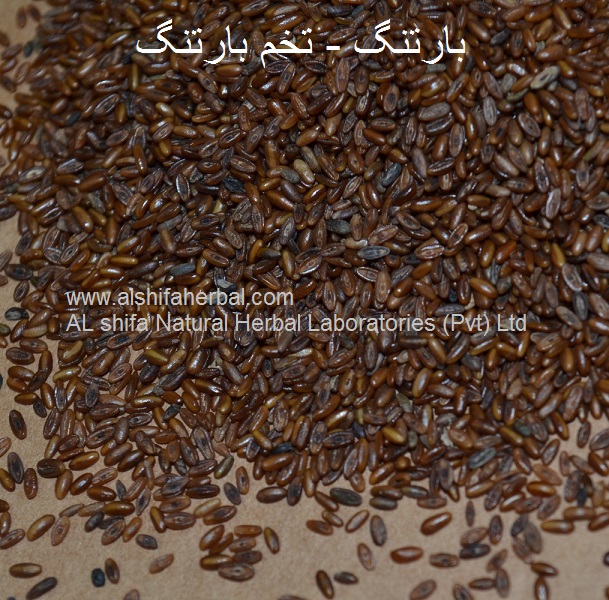

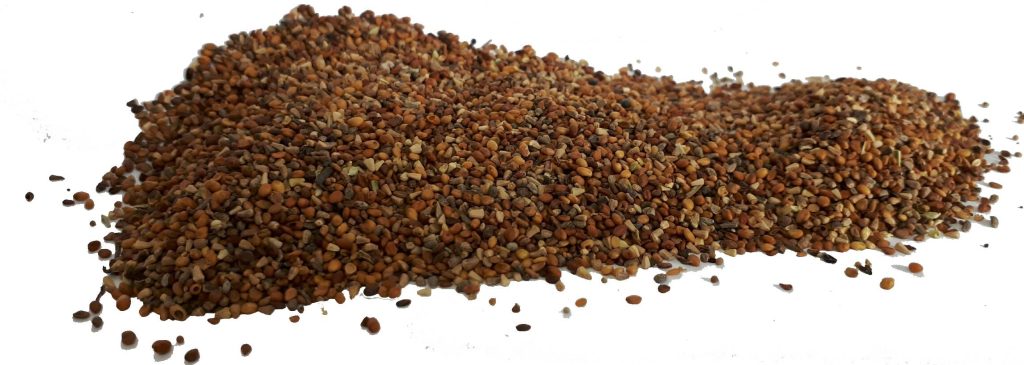
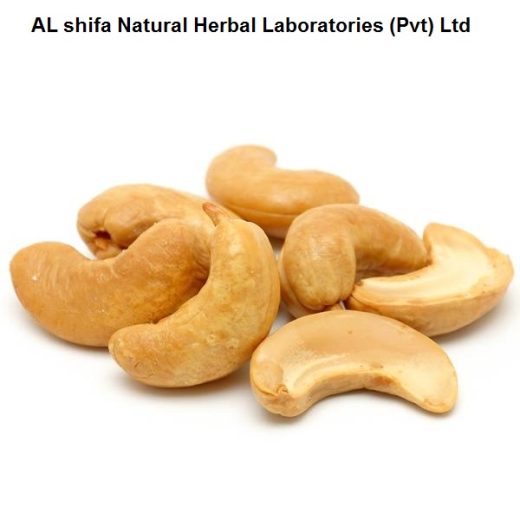
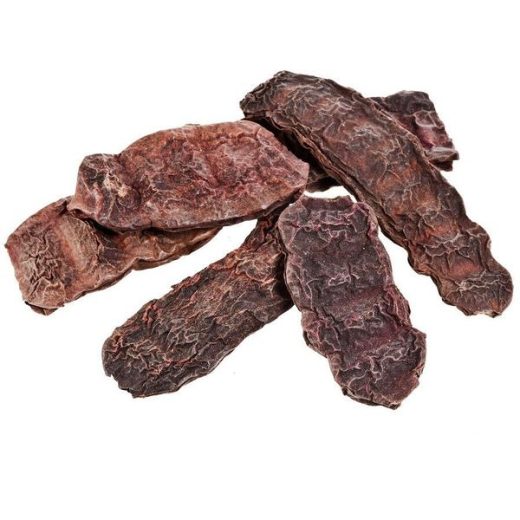
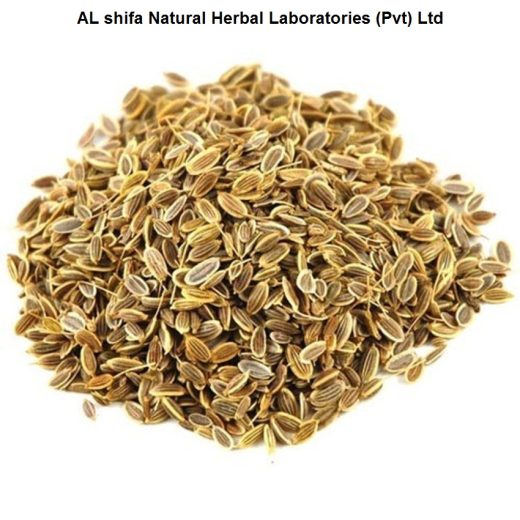



Reviews
There are no reviews yet.